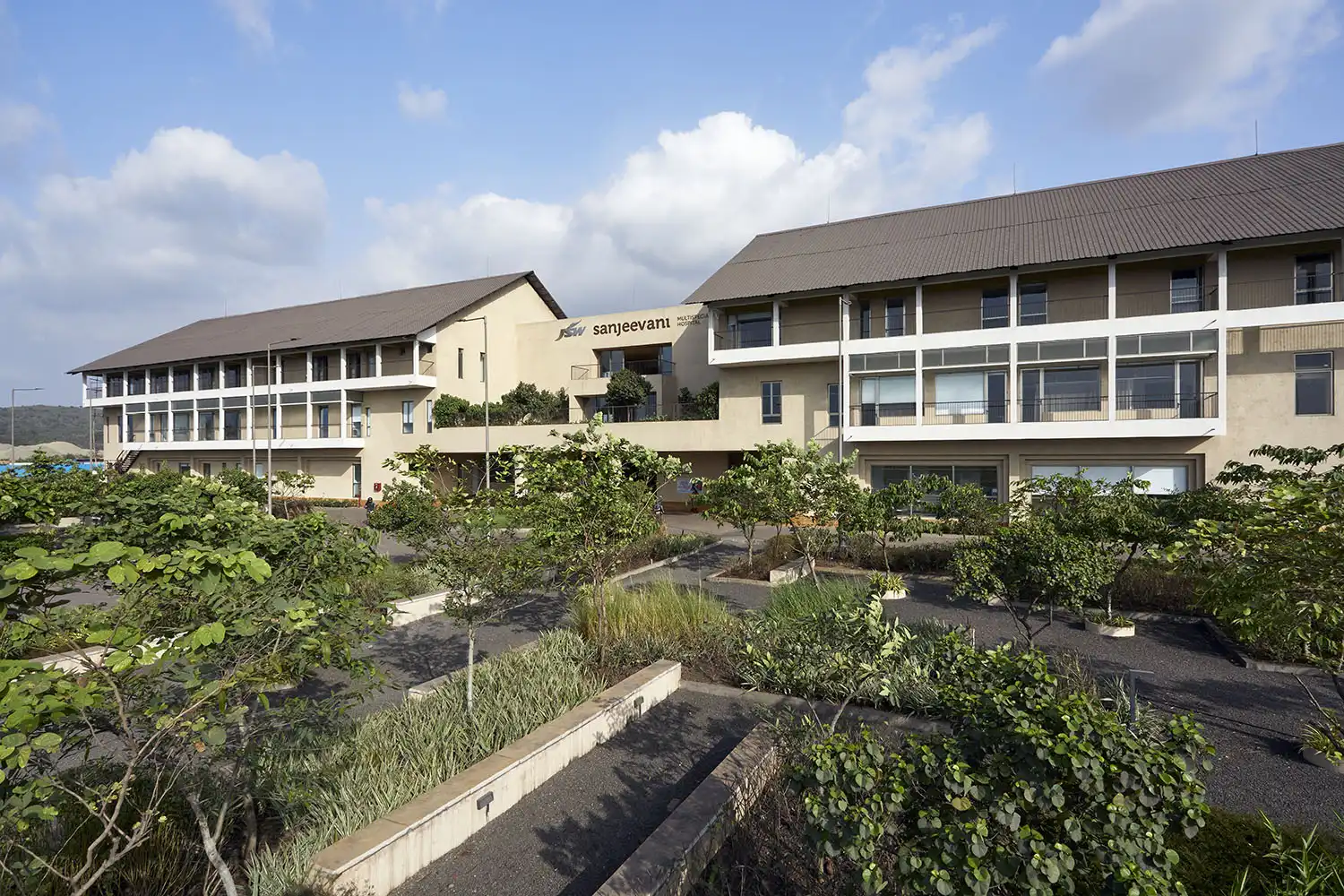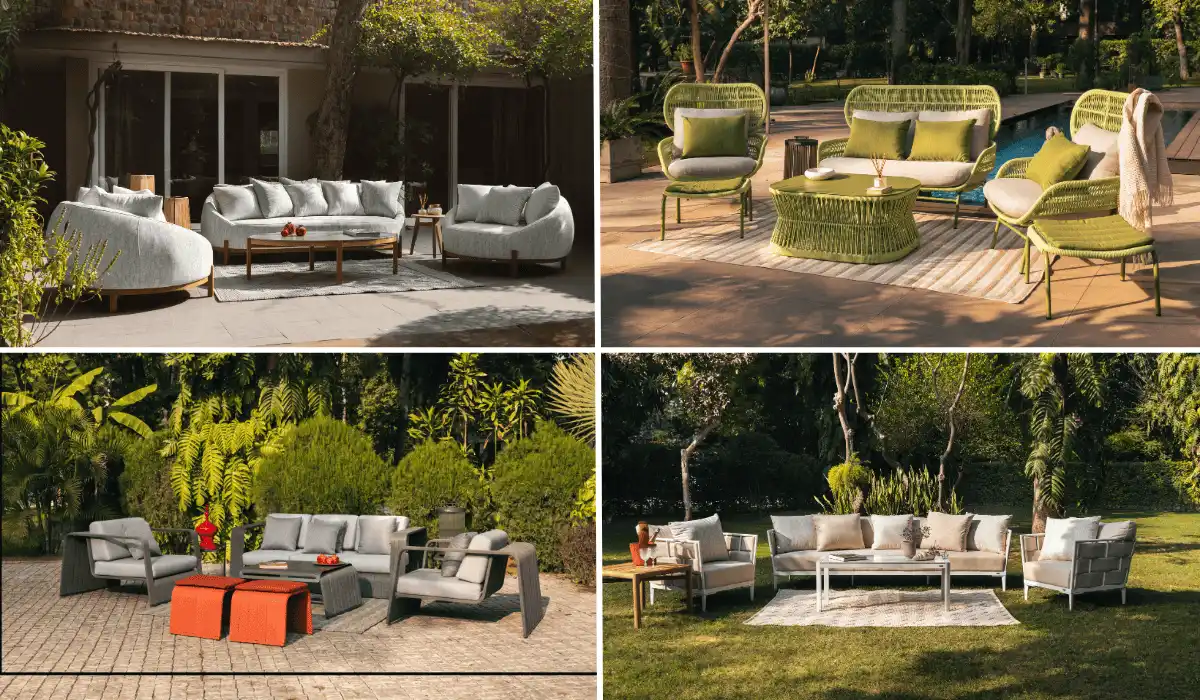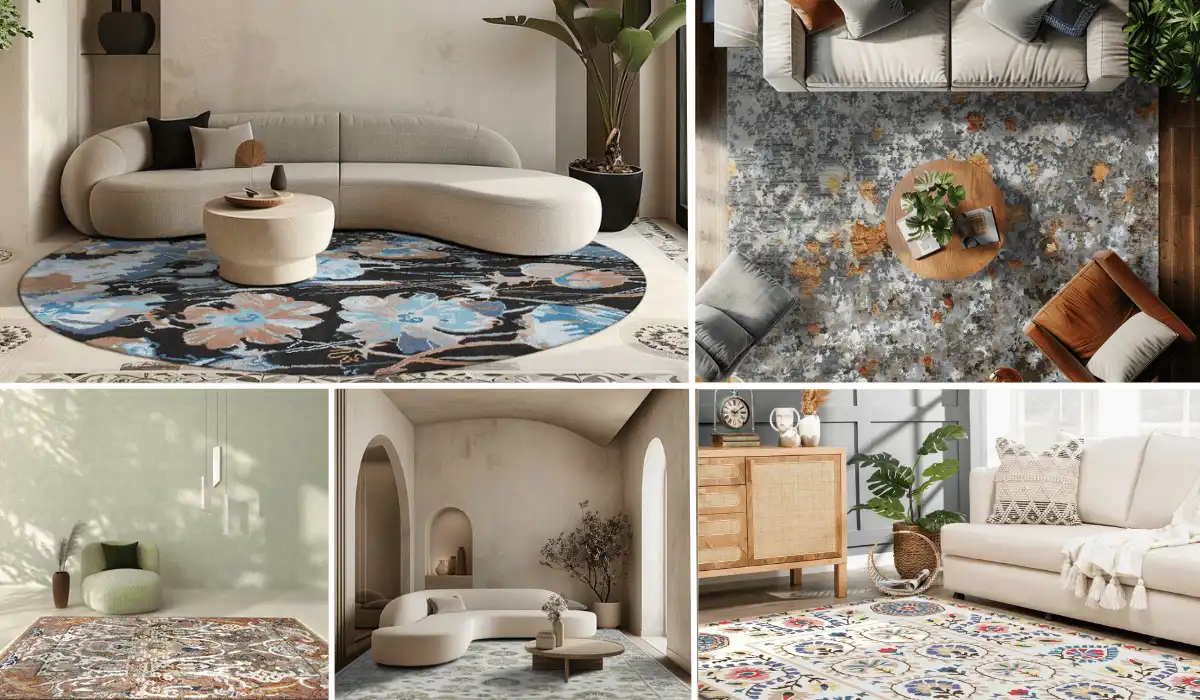As the first multispeciality hospital in Maharashtra’s infrastructure-starved Dolvi village, the JSW Sanjeevani Hospital not only provides better healthcare to the local community but also facilitates the region’s economic and infrastructural growth.
India’s rural communities face a significant shortage of healthcare facilities. Less than 25% of the country’s healthcare facilities are concentrated in rural areas where 70% of the population resides. This gap has led to significant disparities in important health indicators in rural vs urban areas. On average, people living in India’s rural regions can die up to 5 years earlier than urbanites.
An initiative of the JSW Foundation, the JSW Sanjeevani Multispeciality Hospital in Dolvi village, Maharashtra, has been envisioned to bridge this gap in the rural areas of the Raigad district. Only two hours away from the global megacity of Mumbai, the hospital is located along a 50 Km stretch where no other multispeciality hospital existed before.
Also Read: How to Create the Perfect Festive Corner Retreat: A Blend of Warmth, Decor, and Celebration

With abundant natural light and ventilation, the 100-bed hospital provides high-quality and safe healthcare facilities to the people of Dolvi. Its strategic placement along the Mumbai-Goa highway makes it highly accessible. It further helps address the region’s frequent accidents. Additionally, the hospital facilitates both physical and emotional well-being for patients, staff and visitors by connecting them with nature, art and each other.


Zoning and Spatial Programme: Ensuring Efficient Circulation
Facilities and spaces are zoned from the site to the building level to ease navigation and support the smooth movement of various user groups.
At the site level, the hospital building is positioned at the centre of the site, with the parking out front in the north and the ancillary services located at the back. Clear signage and distinct entries, be it for the hospital or the services block, ensure obstruction-free movement of people and vehicles.
At the building level, the distinct adjacencies in zoning and circulation for the emergency, patients and staff, both horizontally and vertically, allow for easy navigation. The ground floor comprises emergency services, outpatient departments, diagnostics, and other forms of ambulatory care. The upper floors consist of the in-patient department, with OTs and ICUs concentrated on the first floor and patient wards on the second floor.
Also Read: Twinstrings Studio, Ghaziabad | Resaiki


The centrally-located main entrance lobby on the ground floor overlooks the greens on the south. It further splits the building functionally into eastern and western wings. The registration and waiting areas are tucked in the western wing. These overlook the gardens on the south, and the emergency spaces have been planned in the eastern wing. Waiting areas for all critical and non-critical zones on the two floors above are also placed in the middle. Further edged by the central staircase with a view of the greens on the south.
To guide user movement across the building’s several zones, ochre-coloured Ita Gold limestone is used as flooring across all non-clinical circulation corridors to lay down a perceivable pathway.
The hospital also caters to visitors passing by the adjoining national highway by providing separate external entries to the cafeteria and the public washrooms on the ground floor, located along the building’s western periphery.
Also Read: The Corner Office, Gurgaon | Mold Design

Ensuring Physical Well-Being through Passive Design Strategies
The hospital channels natural light and air not only for thermal comfort but also to reduce the rate of spread of infections.
In-patient and clinical spaces are located along the northern edge of the building to bring in the maximum possible glare-free natural light. The southern end of the building is lined with open corridors and waiting areas with deep, sloping overhangs. This allows natural light while blocking direct sunlight.

Also Read: Blending Tradition and Modernity: 5 Architects Redefining India’s Residential Spaces
On the northern and southern faces of the building, a continuous balcony runs intermittently on the first floor and continuously on the second floor. These corridors and balconies prevent water from coming in during heavy rains, owing to Dolvi’s coastal climate. Consequently, they allow in winds from the southwest and the west to create an east-west wind channel. This further comforts its inhabitants in the hot and humid weather.
Break-out terraces have been created on the first floor for further penetration of light and wind, fostering a healthy environment for healing and recovery.
Through the design, the architects have strictly limited air conditioning to critical clinical spaces, saving 50 Watts of energy per SqM. Meanwhile, it reduces the rate of transfer of infections. Only 20% of critical clinical spaces require HVAC systems at all times. 30% are naturally-ventilated clinical spaces with provisional air-conditioning, and the remaining 50% are naturally-ventilated public corridors and waiting areas.
Also Read: The Impact of Details in Luxury Interior Design

The thermal efficiency of AAC (autoclaved aerated concrete) block masonry used in external and internal walls further reduces heating and cooling loads.
Fostering Belonging and Facilitating Connection for Emotional Well-Being
The architects have designed the facility as an antithesis of the typical fear-inducing, white, sterile spaces that hospitals are infamous for.
Warm, earthy colours in the form of ochre flooring, earth-coloured walls and dark-brown roofs, commonly found in the local context, create a sense of comfort and belonging for the local people.

Also Read: Whisper’s of Nostalgia and Avant Garde visions: Wa Bespoke by Sage Living launches “The Noir Collection”
Smooth and calm recuperation is at the heart of spaces such as balconies along patient rooms and wards, enabling their path to recovery through safe engagements, including movements like walking and sitting in these balconies. Additionally, the green, break-out terraces on the first floor also create possibilities for interaction and communication among patients, staff, and visitors. Corridors and terraces on the first and second floors are also designed with in-built slabs. These act as seating spaces where visitors and staff can relax and interact with each other.
Connection with nature is a particular focus of the design, with many studies linking it with reduced anger, fear, and stress and increased feelings of pleasantness. Originally a barren, slag-filled land with no vegetation, the site has now been transformed into a green oasis. The plants chosen are hardy, indigenous, and can take the quantum of rains this region experiences.

Also Read: Coffeeville, Pune | VK Group


This thought has been extended into the art programme integrated within the building using the tribal Gond art form (a nature-inspired Tribal art form practised by the Gond tribe of Central India) and the Kalamkari art form (a traditional art form from the Deccan region of India) that depicts nature in various forms. Large murals are installed in public circulation and waiting areas across all levels. Moreover, within the consultation rooms, in-patient department, and maternity rooms, smaller framed Gond art works depict stories from nature similarly. The murals, done on wooden boards, can be easily removed and reinstalled during maintenance.
Offering the Local Community Opportunities to Thrive
The hospital has been designed to not only benefit the overall health of the local community but also create opportunities for their growth and development.
The 13+ specialised consultancies currently offered are based on the local people’s primary medical requirements. The hospital’s design on a structural grid of 7.2m X 7.2m allows incremental changes in internal space configuration as and when this requirement changes.

Also Read: Elysian Echoes, Kolkata | Open Atelier
The treatment prices are packaged to suit the local community’s needs and are competitive with the tariffs of the local healthcare facilities, while also providing much better infrastructure. Free services are also offered under several government schemes.
In a country where it is common for people residing in rural areas to move to urban areas for livelihood, the hospital has created local employment to decrease distressed migration. More than 235 people have been employed from nearby villages – 99% of the hospital staff, including specialised doctors, live within a 25-kilometre radius.
To ensure that healthcare services reach the grassroots level, the hospital conducts 20+ medical camps monthly with an average participation of 150+ people, covering 15 gram panchayats (village councils) and 10 districts.


In the next phase of construction, the hospital infrastructure will expand, increasing its capacity to 150 beds. In addition, a nursing college is also planned in the next stage, with an aim to induct at least 50% of the nurses in-house and add to the overall revenue, making the facility economically self-sufficient.
Saving Energy, Resources and Inculcating Circularity
In addition to the passive design features, several interventions ensure that the hospital’s design and operations are sustainable.
Slag as a by-product and waste generated through the process of steel production from the nearby steel plant has been used in plinth filling, thus saving soil.
Additionally, stormwater from the hardscaped areas and terraces has been channelled into percolation pits to recharge groundwater. The landscape is designed with permeable surfaces to enable surface recharge.



Further, grey water from the STP (sewage treatment plant) and ETP (effluent treatment plant) is recycled and used to irrigate the hospital landscapes and in flushing systems. Vermicomposting is done to decompose kitchen waste and use it to enhance soil fertility.
A centralised, 6000L solar-powered hot water system is also installed in the hospital. Other energy-saving features include a variable chilled water pumping system to minimise AC loads, carbon monoxide sensor for fresh air intake, dual flushing system to save water, and water-saving faucets across all washrooms.
Also Read: Colston’s New Tech-Integrated Wellness Products
Project details:
| Project Name | JSW Sanjeevani Multispeciality Hospital, Dolvi, Alibaug |
| Typology | Healthcare |
| Location | Maharashtra |
| Client | JSW Foundation |
| Completion date | August 2021 |
| Project Area | 87,000 SqFt in Phase I (100 beds), expandable to 1,30,000 SqFt (150 beds) in Phase II, on 5 Acres plot |
| Credentials | Architect SJK Architects Design team: Shimul Javeri Kadri, Sarika Shetty, Bhavin Patel, Harshini Yohee, Sapna Rohra, Rishit Jain |

Biltrax Construction Data is tracking 33,000+ projects on their technology platform for their clients.
Get exclusive access to upcoming projects in India with actionable insights. Gain further competitive advantage for your products in the Indian Construction Market.
Visit www.biltrax.com or email us at contact@biltrax.com to become a subscriber and generate leads.
Disclaimer: The information herein is based upon information obtained in good faith from sources believed to be reliable. All such information and opinions are further subject to change. Furthermore, the image featured in this article is for representation purposes only. It does not in any way represent the project. If you wish to remove or edit the article, please email editor@biltrax.com.
Discover more from Biltrax Media, A Biltrax Group venture
Subscribe to get the latest posts sent to your email.






















